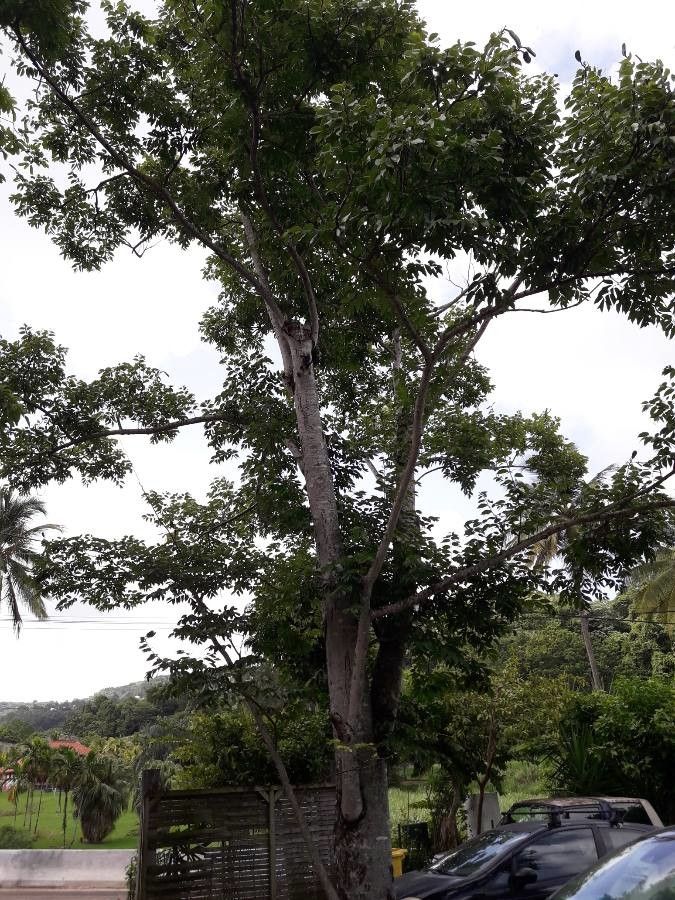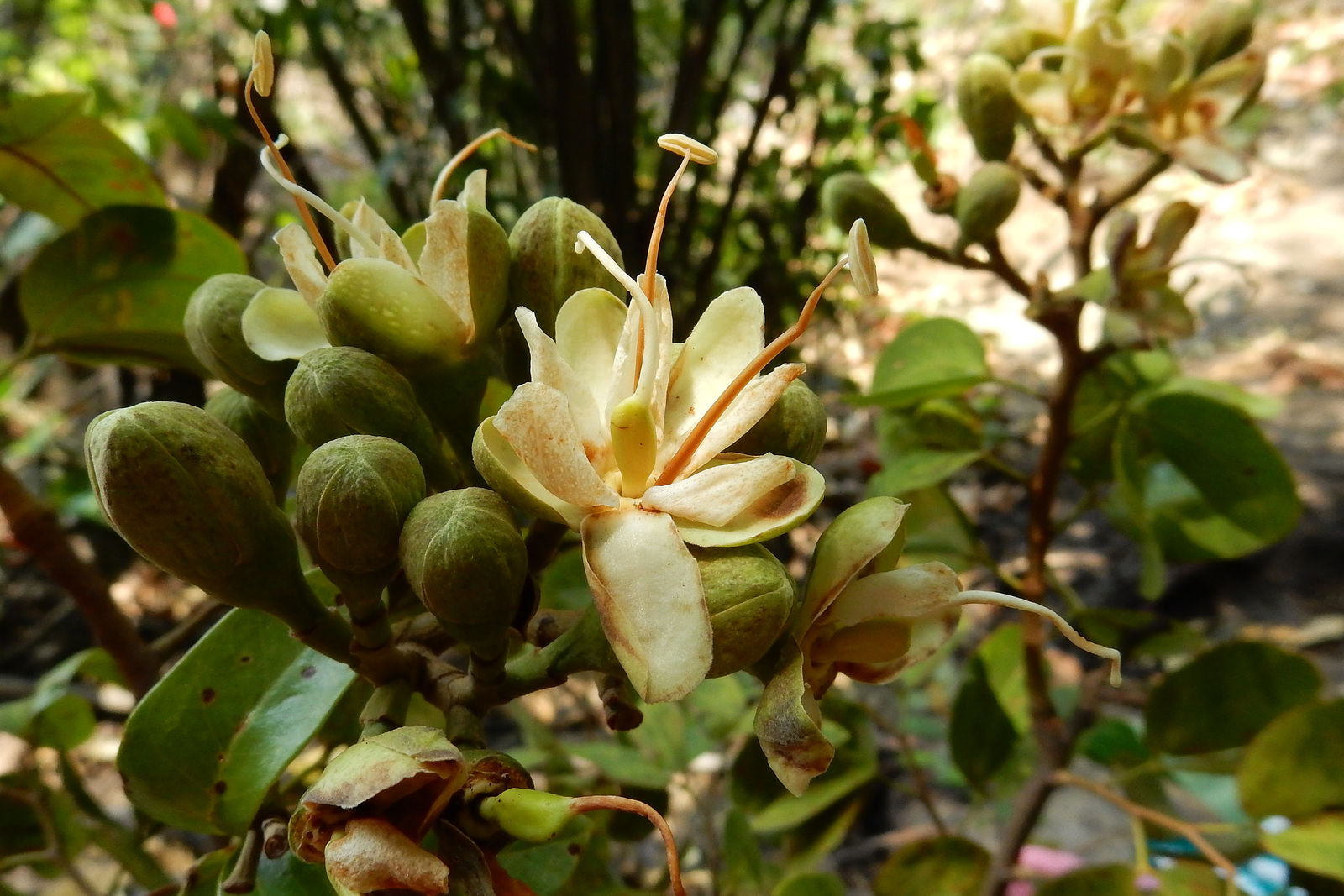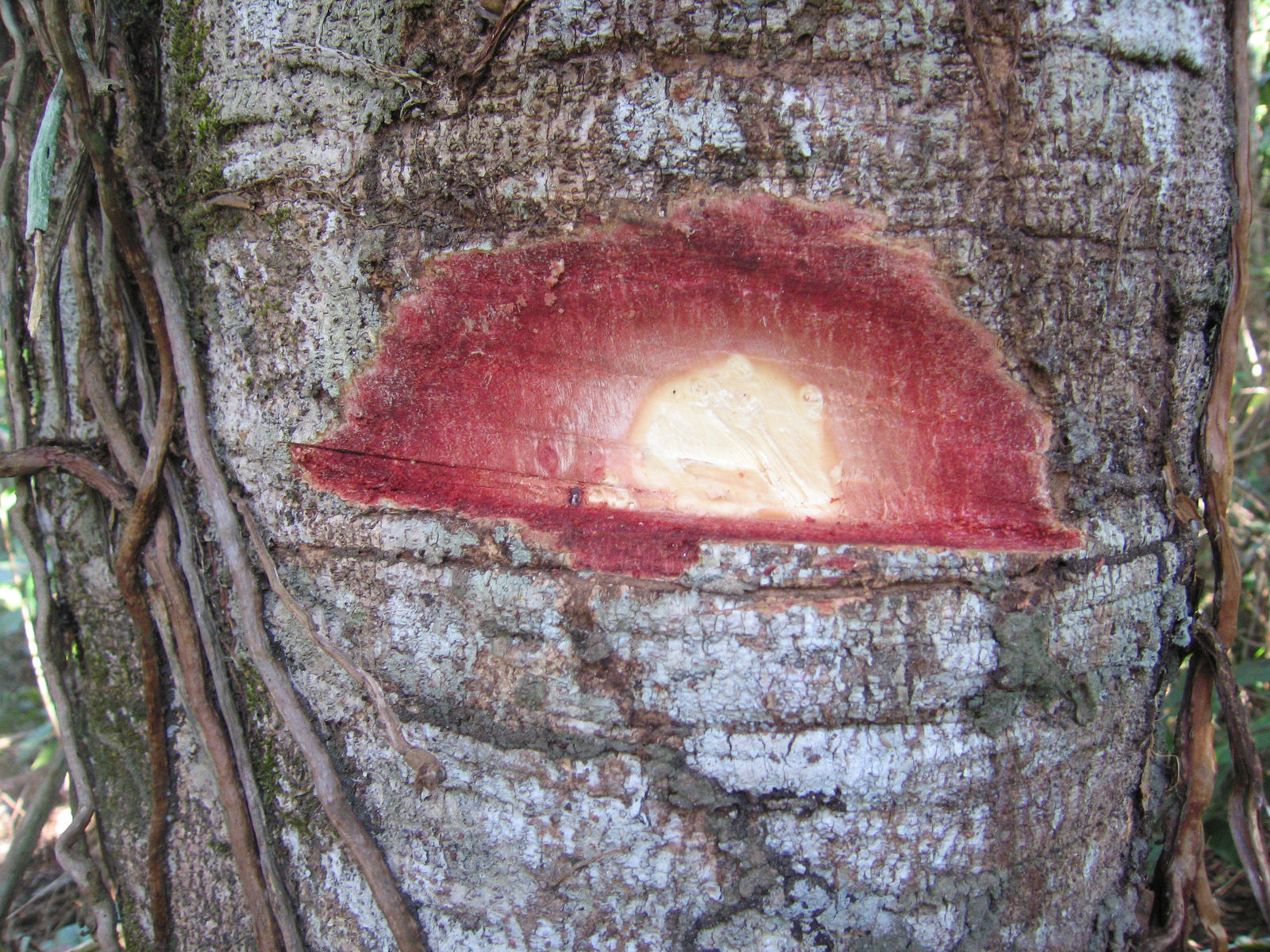Stinking Toe, Jatoba, Courbaril
hymenaea courbaril
Also known as: ["Brazilian Cherry","Jatoba","Stinking Toe Tree"]
Overview
A large, long-lived tree native to the Amazon rainforest, known for its hard timber and edible, fragrant seed pods.
Benefits & Perks
["long-flowering","disease resistant","wildlife attractant (bees, butterflies, birds)","shade tolerant","rare/collector’s item"]
Botanical Classification
| Phylum: | Magnoliophyta |
| Class: | Magnoliopsida |
| Order: | Fabales |
| Family: | Fabaceae |
| Genus: | Hymenaea |
| Botanical Name: | Hymenaea courbaril |
Plant Characteristics
Basic Information
- Category: Trees
- Suitable Location: outdoor garden in tropical or subtropical regions
- Suitable For:
- Is Weed: No
- Allergenicity: low
Environmental Needs
- Climate: {"temperatureRange":"20–35°C"}
- Hardiness: {"zones":"9–11"}
- Misting: rarely required, only if ambient humidity is very low
- Drainage: Fast-draining to prevent waterlogging.
- Soil Type: Well-draining potting mix with added perlite or coarse sand; can include some organic matter like compost.
Maintenance Level
- Maintenance Level: moderate
- Toughness Level: high
- Pruning Frequency: Annually in late winter or early spring before new growth begins.
- Pruning Intensity: Moderate; remove up to one-third of the oldest stems if needed.
Care Details
Ideal Sunlight Coverage:
Bright indirect light for 6–8 hours daily; can tolerate some direct morning sun but avoid harsh afternoon sun.
Sunlight Tolerance Tips:
Acclimate gradually to direct sun to prevent scorching; place indoors near a south or west-facing window with sheer curtains; outdoors, provide dappled shade during peak sun hours.
Care Requirements
Care Difficulty
moderatemoderate
Sunlight
full sun to partial shade
Rotate plant weekly for even growth; use sheer curtains to filter intense light; avoid direct afternoon sun.
Watering
every 7–10 days during active growth, reducing frequency in winter
Water thoroughly until it drains from the bottom, allow soil to dry between waterings, avoid overwatering especially in cooler months.
Soil
well-draining, fertile loam
pH: Slightly acidic to neutral (pH 6.0–7.0).
Use a mix with good drainage; avoid heavy clay soils; topdress with compost annually.
Temperature
Prefers warm temperatures between 65–85°F (18–29°C); can tolerate brief dips to 50°F (10°C) but thrives in consistently warm conditions.
Keep away from drafty areas; maintain stable temperatures; adjust watering based on heat levels.
Fertilizing
every 2–3 months during growing season with balanced fertilizer
Always water before fertilizing to prevent root burn; flush soil occasionally to prevent salt buildup; stop fertilizing in winter.
Propagation
Methods
Stem cuttings or seed; stem cuttings are more common for home growers.
Step-by-Step Propagation Guide
- Take a 4–6 inch cutting, remove lower leaves, apply rooting hormone, plant in medium, keep moist and warm.
Best Time: Spring or early summer when the plant is actively growing.
Environment
Warm, humid environment with indirect light; maintain temperatures around 75–85°F (24–29°C).
Medium
Well-draining potting mix with perlite or sand; can also root in water initially.
Hormone
Rooting hormone is recommended to improve success rates.
Timeline
Roots may develop in 4–8 weeks; establishment can take several months.
Tools Needed
Pruning shears, rooting hormone, small pots, well-draining mix, plastic wrap or propagator.
Quick Tips
Use healthy, non-flowering stems; keep consistently moist but not waterlogged; provide bottom heat if possible.
Pruning & Repotting
Pruning Guide
Method
Selective thinning of branches, heading back to encourage branching, and removal of crossing or damaged stems.
Pruning Plan
Prune to maintain shape, remove dead or diseased wood, and encourage bushier growth; focus on structural improvement.
Tools
Pruning shears, loppers (for larger branches), sterilizing solution.
Checklist
Sterilize tools, prune during dormancy, remove dead/diseased wood, shape the plant, clean up debris.
Repotting Guide
Best Season
Early spring before the growing season starts.
Pot Size
One size up from current pot (e.g., +2 inches in diameter).
Method
Remove plant gently, trim any circling roots, place in a slightly larger pot with fresh well-draining soil, water thoroughly.
Suggestions
Repot every 2–3 years or when roots fill the pot; beneficial for root health and growth.
Checklist
Check root bound status, prepare new pot, trim roots if needed, use fresh soil, water after repotting.
Advanced Care Tips
Watering Mastery
Watering Checklist
Check soil moisture, water deeply, ensure drainage, adjust for season.
How to Apply Water Properly
Water directly at the root zone, ensure water penetrates deeply to reach the root ball, allow excess water to drain completely, water in the morning to reduce evaporation and fungal risk.
Watering Schedule Tips
Water deeply once the top inch of soil feels dry; reduce frequency in winter to prevent root rot.
Soil Improvement
Add perlite or coarse sand for drainage, incorporate compost for fertility, ensure aeration with chunky components.
Temperature Stress Management
Signs of Temperature Issues
Chlorosis (yellowing leaves), leaf drop, stunted growth, or browning leaf edges.
Cold Stress
Low temperatures slow growth, cause leaf drop, and increase susceptibility to root rot due to reduced metabolic activity.
Solution: Move to a warmer location, insulate the pot with bubble wrap, avoid overwatering, and provide a heat source if necessary.
Hot Stress
Excessive heat can lead to wilting, leaf scorch, and dehydration, especially if combined with low humidity.
Solution: Provide shade during peak heat, increase humidity with misting or a humidifier, water more frequently but avoid waterlogging.
Fertilizing Guide
Fertilizing Checklist
Check season, dilute fertilizer, water before application, avoid winter feeding.
Fertilizing Method
Use a balanced liquid fertilizer diluted to half strength every 4–6 weeks during the growing season (spring and summer); avoid fertilizing in fall and winter.
Common Problems & Solutions
Toxicity Warning
Cats
Slightly ToxicThe seeds of Hymenaea courbaril can cause mild gastrointestinal distress in cats upon ingestion. The toxic effects are generally limited to the digestive system.
⚠️ Symptoms:
🌿 Toxic Parts:
⚡ Toxic If:
if eaten
Dogs
Slightly ToxicThe seeds of Hymenaea courbaril can cause mild gastrointestinal upset in dogs if ingested. The toxic compounds primarily affect the digestive tract, leading to discomfort.
⚠️ Symptoms:
🌿 Toxic Parts:
⚡ Toxic If:
if eaten
Humans
Slightly ToxicThe seeds of Hymenaea courbaril contain toxic compounds that can cause mild gastrointestinal distress and other mild symptoms upon ingestion. The physiological impact is generally limited to the digestive system.
⚠️ Symptoms:
🌿 Toxic Parts:
⚡ Toxic If:
if eaten
Frequently Asked Questions
Q: Is the fruit of Hymenaea courbaril edible?
A: Yes, the seed pods are edible and are often used in local cuisines for their sweet, fragrant pulp.
Q: How tall does Hymenaea courbaril grow?
A: It can grow up to 30-40 meters tall in its natural habitat.
Q: Is Jatoba wood durable?
A: Yes, Jatoba wood is highly durable and resistant to decay, making it valuable for construction and furniture.
Quick Reference
| Family: | Fabaceae |
| Care: | moderate |
| Light: | full sun to partial shade |
| Water: | every 7–10 days during activ |
Get Expert Care Tips
Download the Plantious app for personalized care reminders and plant identification!
Google Play App Store








